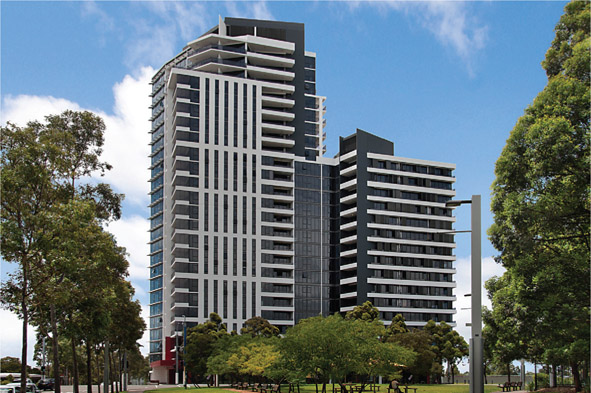5.7 Major events in Australian cities
Cities have infrastructure and facilities that allow them to host certain large events that towns cannot support. These events can bring economic, social and cultural benefits to the city. Many cities in Australia host major events, from food and wine festivals to global events such as the 2000 Summer Olympic Games. These events are important because they bring people, goods, services and investment into the cities and their communities.
The benefits of hosting events has seen the New South Wales and Victorian governments set up organisations to attract major events into their cities and regional areas. This has seen many international sporting and cultural events come to New South Wales and Victoria. These have provided economic benefits for the local economy via tourism and hospitality. For example, an exhibition of artefacts from the tomb of the ancient pharaoh of Egypt, Tutankhamen, was brought to Melbourne, and international football (soccer) team Manchester United played 2013 preseason games in Sydney. These events provided national and global exposure that promoted both Melbourne and Sydney as major cities in Australia.
One example of an Australian city hosting a major event is the 2000 Sydney Olympics.
DEVELOPING YOUR UNDERSTANDING 5.11
The legacy of the Sydney Olympics
To me, the legacy lies in those intangible qualities such as the stories that people have to tell now because of the Olympic Games. (Cathy Freeman, 400-metre Olympic gold medallist, Sydney 2000)
The legacy of an Olympic Games is a very complex issue: how do we measure a legacy?
One way to look at the legacy of the Olympics is from an economic perspective. When Sydney bid for the 2000 Games, the bid committee estimated a total cost of $3 billion, of which just $363.5 million would be borne by the public. By 1998, however, when the New South Wales Auditor-General was called in to review the Games’ budget, it became clear that this figure was a huge underestimate.
He calculated that the true cost of the Games was more like $5.9 billion, of which the public would be paying $2.3 billion. In 2002 the New South Wales Auditor-General undertook a further audit, confirming that the Sydney Games had ended up costing $6.6 billion, and had cost the public purse somewhere between $1.7 and $2.4 billion.
So if you look at the legacy of the Olympic Games from an economic perspective, it wasn’t a sound investment for New South Wales and Australia.
The built and physical environment is another legacy that needs to be examined. Sydney now has world-class sporting venues: ANZ Stadium (Olympic Stadium), the Olympic Park Aquatic Centre, the Equestrian Centre, the Tennis Centre and the International Regatta Centre. These sporting areas have become training grounds for the next generation of athletes, with many schools and organisations, such as the New South Wales Institute of Sport, using them to train young athletes. By having these world-class facilities, Australia’s young athletes can develop their talents, which may allow them to achieve their goals of competing at a global level and even in future Olympics.
Another contentious issue in hosting an Olympics is what to do with the built environment (other than the sporting venues) once the Games have finished. Having developed such specific infrastructure and sites for the Olympics, there needs to be ways to adapt and/ or redevelop the area afterwards. One of the key reuses of the Olympic site was the conversion of the Athletes’ Village into a residential suburb called Newington. This was very successful, with many of the houses being purchased straight after the Olympics.
Another major reuse was the relocation of the Royal Easter Show from Moore Park to the Olympic site. The Royal Easter Show is an annual two-week event that showcases agricultural products and livestock, and it attracts over 800 000 people. This move has been very successful: it has new, modern facilities for all exhibitors, and a more central and accessible location, so there are now increased attendances.

However, while these reuses are in effect now, the Olympics site was underutilised for a long period after the Games, with governments and authorities debating what to do with it. There were many debates as to the best model to use, but they eventually settled on a ‘mixed use’ philosophy. This approach promotes the integration of recreational, educational, residential and commercial activities in the one area.
The recreation aspect was achieved by using the Olympics sporting facilities and by providing green space in the form of parks. Education has been included through the development of a centre that runs fieldwork activities; these look at the land remediation process on the Homebush site. The centre also runs activities that look at the regeneration of the intertidal wetlands, which were once under severe threat.
Residential development was seen as a crucial part of the reuse of the Olympic site. The residential living on the site currently consists of two high-rise towers, named the Australia Towers, with a further two towers in the planning or construction phase. Having a permanent population changed the dynamic of the area; people who lived there permanently needed a range of services, such as cafes, restaurants, retail and supermarkets, all of which had to be built.
The commercial sector was slow to move to the Olympic site, but over the past 4–5 years there has been an increase in the amount of commercial activity. The most notable commercial activity on the site was the building of three office blocks by the Commonwealth Bank. These blocks house around 5000 employees who have been relocated from the Sydney CBD. There has also been an increase in the number of hotels on the site, with three permanent hotels catering for tourists and for those attending events (such as music and sporting events) held at the site.


The ‘Green Games’ left many unique and significant benefits for the physical environment.
It regenerated ecologically sensitive wetlands, protected and enhanced the biodiversity of sites, established vast areas of green space within a built environment and remediated land. This has had dramatic impact on the environment. Areas that were once sites for residential and industrial waste dumping are now areas of unique environmental significance: the Brickpit (where clay was extracted to make bricks) is now home to a colony of the green and golden bell frog.
Source 5.21a Sandra Hall, from the Sydney Olympic Park Authority, talks about the green and golden bell frog. (01:44)
DEVELOPING YOUR UNDERSTANDING 5.12
Copy the table below and summarise the positive and negative legacy of the Sydney Olympics.
The legacy of the Sydney Olympics

Positive Negative Use the internet to gather information about the Sydney and London Olympic Games.
Compare and contrast the legacies of the Sydney Olympics (2000) and the London Olympics (2012). In your answer you should look at:
- built environment
- economic costs
- sporting facilities
- environmental impacts
- reuse of the Olympic sites.
Imagine that your home city or town is chosen to host the next Olympic Games, then complete the following tasks:
- Identify an area in your home city/town that would be the centre of the Games and suggest what kinds of changes to buildings, facilities and infrastructure would be required to host the events.
- Suggest the economic effects the Games would have on your town while they are being held, and their possible economic legacy.
- Suggest what changes to the built environment would remain in place after the Games and how those places could be repurposed for ongoing use.
- Explain the environmental impact the Games would have on your home city/town and what could be done to protect the local environment.